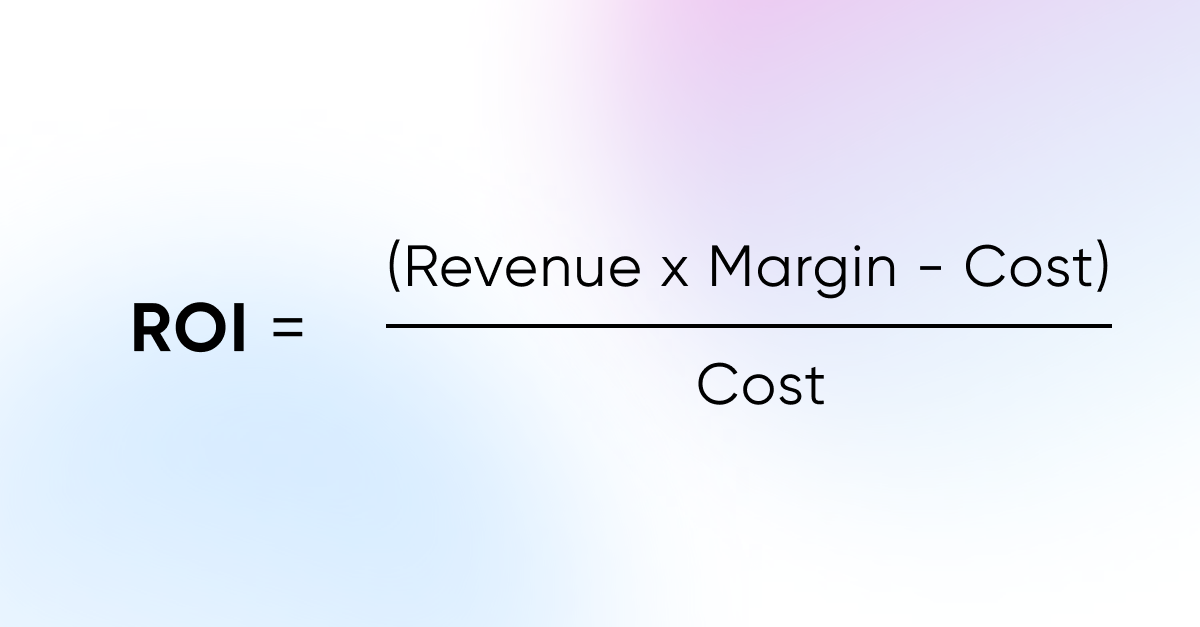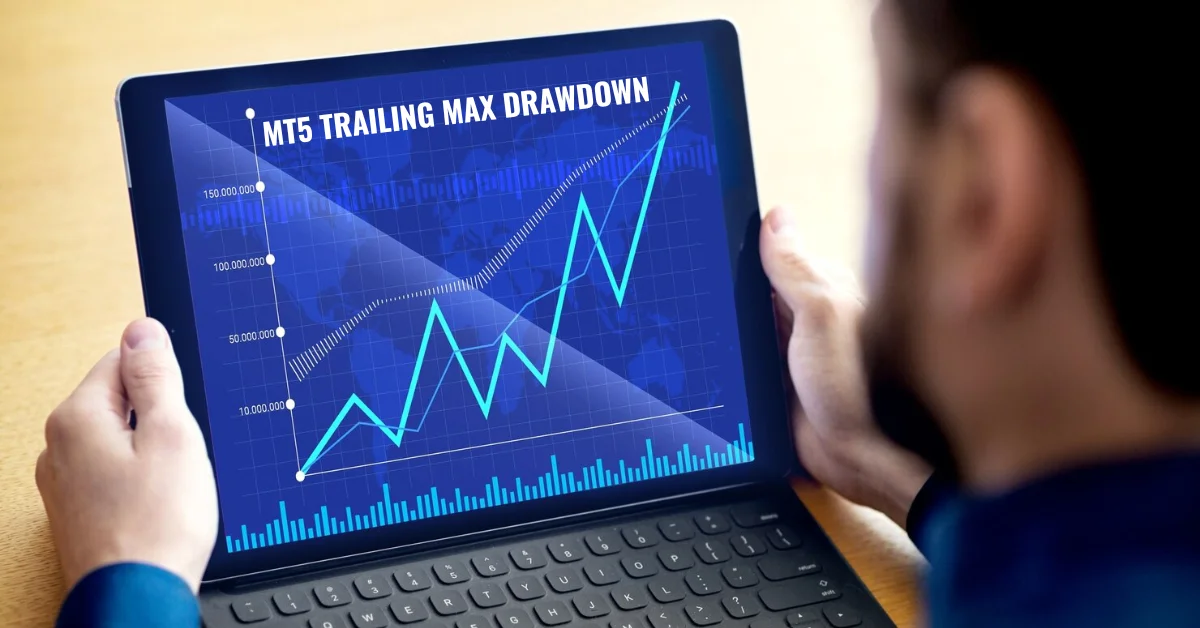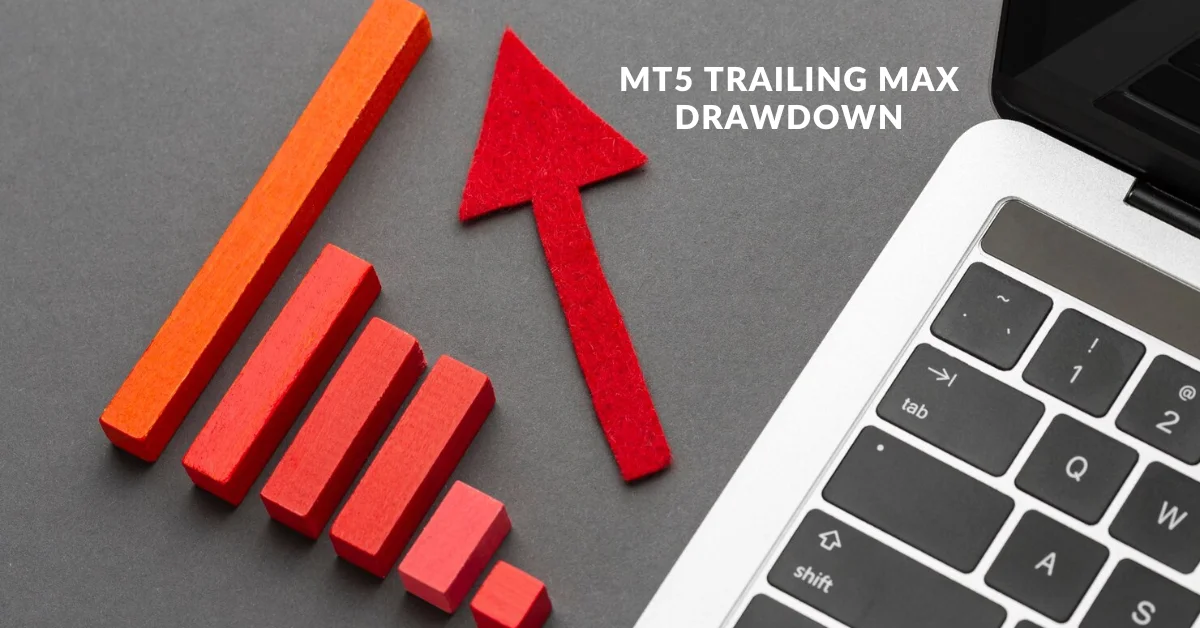BUSINESS
How to Calculate ROI for Influencers: A Step-by-Step Guide

In recent years, the influencer marketing industry has seen a steady rise, and it continues to grow every second. In fact, the industry has grown to an impressive $21.2 billion in 2023. Businesses of different scales and across different industries are actively incorporating influencer marketing as a viable strategy to enhance brand awareness, improve sales, and create more credible connections with their target consumers.
A major cause of success behind the rise of influencer marketing is its ability to offer great ROI or return on investment. However, calculating the ROI of influencer marketing can be difficult for individual brands and small businesses. This is mostly due to the fact that influencer marketing extends across different short and long-term objectives. Moreover, it is majorly focused on things like growing brand awareness, which, is hard to measure.
To make the process easier, here’s a step-by-step guide on calculating ROI for influencers.
A 5-Step Process of Calculating ROI
Calculating ROI is not just punching in some numbers and metrics. The process goes way back, right from planning a campaign to the final outcome. Here are five steps you need to take that will help the calculation process and also in achieving better results.
Step 1: Have a Clear Campaign Goal
The first and most important step of an influencer marketing campaign is having a clear goal. These goals can include better brand visibility, better engagement, content creation, or direct revenue generation. Your campaign goal needs to complement your bigger marketing objectives. Every aspect needs to be cohesive for the best outcomes.
Step 2: Understand and Set KPIs
KPIs are Key Performance Indicators that offer measurable numbers that can be used to evaluate the success of a campaign. For Eg, if the objective was to enhance brand awareness, relevant KPIs can be reached and impressions on the page or profile. If the objective is more leads, then KPIs should include website traffic, subscribers, and click-through rates on any page link.
Step 3: Choosing the Influencer
The importance of choosing the right influencer for your campaign cannot be stated enough. This is what can make or break the entire campaign. For this, you need to assess the size of your target audience, compare costs of micro vs nano influencers, assess their niche and work pattern, and also how well their aesthetics match your own vision.
Step 4: Picking the Right Strategy
Influencer marketing campaigns can differ based on the brand and the influencer’s mode of work. It can be a giveaway, a promo code offer, or maybe a specifically curated hashtag. It can be a combination of more than one strategy as well.
Ensure that both you and the influencer are clear on what deliverables are expected, including the cost and the deadlines. Ask them to share accurate analytics reports from the posts, as this will help in the calculation process.
Step 5: Calculating the Influencer Marketing ROI
The first important step in calculating your ROI is to know what your initial investment is. For this, noting each expense of the steps in the previous segment is needed. Consider the cost of any analytics software, influencer agency fee, influencer fee, product costs, etc. Investment does not always mean only monetary exchange. It includes the value of any product or service sent, time, and resources spent.
A simple formula to calculate the ROI of your influencer is:
Profit Return/ Total Investment x 100
Ancillary Factors to Consider
The process of calculating ROI is a bit more difficult in practice. While sales and profits are measurable metrics, these are not the only determinants of the success of an influencer campaign. A few more points to be considered are detailed in the following sections.
Proview Views
For a small business, brand awareness is highly essential for better reach. A viable indicator of better awareness is the number of views of profile impressions. Impressions help understand the ROI of the influencer marketing campaign. It indicates the potential of generating more engagement, gaining more followers, and, as a consequence, more customers.
Nowadays, most social media platforms have inbuilt analytics sections where you can see the impressions on the platform you are promoting.
Checking Engagement
Engagement is a big factor in calculating ROI. This includes the number of likes, shares, and customer comments and saves on a post. This can also be tracked using the profile insights section of the platform.
Moreover, you can check the analytics report you receive from the influencer on the sponsored posts. It will help understand how successful the post is and whether the paid post or sponsorship was a worthy investment.
Follower Count
The more followers your brand profile gets, the more credibility your brand achieves. When planning a campaign, ensure that your goal is to have long-lasting followers, not ones who follow only for the purpose of a giveaway or a promo code. Having followers who stay for long is what actually helps build credible connections and lasting customer relationships.
When you choose an influencer, check how well their followers engage with their posts and how fluctuating their follower count is. A steady growth or an engaged follower base will offer you the same.
Time of the Campaign
When you compare costs of micro vs nano influencers, it is important to see what time of the year it is. During holidays and occasions, usually considered peak seasons, the costs are higher since most brands take to influencer marketing to promote holiday offers and limited edition launches.
Owing to the large number of posts, chances of gaining visibility and exclusivity are low, and as a result, your ROI will also be low. It is, therefore, always better to plan for longer and year-round campaigns and not just focus on peak seasons.
Type of Product and its Pricing
It is important to understand that different services and products have different results. A completely new idea or product requires more detailed videos to show its offerings, uses, and benefits. This helps convince viewers about its credibility.
A piece of jewelry can get engagement based on an attractive post or a story. Allot budgets and revenue targets based on the type of product and the purchase behavior of your customers.
Final Words
With small businesses understanding the value of influencer marketing, the industry is predicted to grow even further. However, it is always necessary to have clear goals and set a target to achieve the best ROI. Undertake the steps mentioned above and gain a clear picture of how much you are getting back. Remember, money is not always a parameter. Consider all factors, from follower counts to engagement, to have a well-rounded assessment. Make necessary changes based on the results and take a step towards even better ROI.
FINANCE
MT5 Trailing Max Drawdown: Key Tips for Traders

Introduction to mt5 trailing max drawdown
Navigating the world of trading can be a rollercoaster ride, filled with exhilarating highs and daunting lows. For traders using MetaTrader 5 (MT5), managing risk is paramount. This is where MT5 trailing max drawdown feature comes into play, offering a lifeline for those looking to protect their profits while riding out market fluctuations.
Have you ever found yourself watching your hard-earned gains slip away? If so, understanding how to utilize the trailing max drawdown effectively might just change your trading game. Let’s explore this powerful tool that combines strategy with security, ensuring you stay in control even when markets turn volatile. Whether you’re a seasoned pro or just getting started, mastering this feature could be the key to unlocking more consistent success in your trading journey.
Understanding Mt5 Trailing Max Drawdown
Mt5 Trailing Max Drawdown is a crucial feature for traders seeking to manage risk effectively. This tool helps in setting a limit on the maximum drawdown an account can experience before action is taken.
When using this function, traders specify a percentage that represents their acceptable loss level. If losses hit this threshold, it triggers protective measures like closing trades or stopping further trading activities.
Understanding how trailing max drawdown works requires recognizing its dynamic nature. As your account balance grows, the drawdown level adjusts accordingly, allowing for both protection and profit maximization.
This adaptability makes it ideal for volatile markets where conditions can change rapidly. It offers traders peace of mind while they focus on strategies rather than worrying about potential losses dragging them down significantly.
Common Mistakes to Avoid with Mt5 Trailing Max Drawdown
When using MT5 Trailing Max Drawdown, traders often fall into a few common traps. One major mistake is setting the trailing stop too tight. This can lead to premature exits from trades, missing out on potential profits.
Another pitfall is ignoring market volatility. In highly volatile markets, your drawdown settings may not hold up well, resulting in unexpected losses. Always consider current market conditions before applying your strategy.
Failing to backtest your settings is another frequent error. Relying solely on theoretical strategies without testing them in real scenarios can be detrimental.
Many traders also overlook adjusting their max drawdown levels over time. As you gain experience and adjust your trading style, these parameters should evolve with you for optimal performance.
Emotional trading plays a significant role in decision-making. Stick to your set rules rather than letting fear or greed dictate changes in your trailing max drawdown strategy.
ALSO READ: Crypto30x.com: Elevate Your Crypto Game
Tips for Setting Up Mt5 Trailing Max Drawdown
Setting up the MT5 trailing max drawdown requires careful consideration. Start by defining your risk tolerance clearly. Knowing how much you are willing to lose can guide your settings effectively.
Next, choose a suitable percentage for the trailing drawdown. Many traders opt for 10% to 20%, but this depends on your trading strategy and market conditions.
Monitor market volatility closely. Adjusting your drawdown levels during high volatility can protect against significant losses while allowing room for potential gains.
Test different configurations in a demo account before going live. This practice will help you fine-tune parameters without risking real capital.
Keep an eye on performance metrics regularly. Adaptability is key; if certain settings aren’t yielding results, don’t hesitate to reassess and tweak them as needed.
Benefits of Using Mt5 Trailing Max Drawdown for Traders
Utilizing the MT5 Trailing Max Drawdown feature offers traders several advantages. One of the primary benefits is risk management. It allows traders to set a limit on potential losses, protecting their capital during volatile market conditions.
Another significant advantage is enhanced decision-making. By visualizing drawdowns in real-time, traders can make informed choices about when to exit or adjust positions. This proactive approach minimizes emotional trading and promotes discipline.
Additionally, the trailing max drawdown mechanism can help maximize profits by locking in gains as trades become profitable. As the market moves favorably, it adjusts automatically, ensuring that a portion of those earnings remains secure while still allowing for further growth.
Moreover, this tool fosters confidence among traders. Knowing there’s a safety net reduces anxiety during uncertain periods and encourages more strategic trading practices over time.
ALSO READ: Immediate Serax V3 Unveiled: Mastering Cryptocurrency Trading
Case Studies: Successful Trader Strategies with Mt5 Trailing Max Drawdown
One notable case study involves a forex trader who implemented the MT5 trailing max drawdown’s feature to safeguard profits during volatile market conditions. By setting a trailing stop that adjusted with price movements, this trader successfully locked in gains while minimizing losses.
Another example features a commodities trader focused on gold trading. This individual set their max drawdown limit conservatively, allowing for incremental adjustments based on market trends. As prices fluctuated, they capitalized on upward surges without succumbing to fear-induced selling.
A third case highlights an experienced stock day trader who combined technical analysis with the MT5 trailing max drawdown’s tool. They used it to maintain discipline during rapid price changes, ensuring that emotions didn’t dictate trading decisions.
These examples illustrate how traders effectively harnessed the capabilities of MT5’s trailing max drawdown feature to optimize their strategies and achieve consistent results.
Conclusion
The Mt5 trailing max drawdown feature can be a game changer for traders looking to optimize their risk management strategies. By understanding how it works and avoiding common pitfalls, you can harness its potential effectively. Setting up the right parameters tailored to your trading style is crucial for maximizing its benefits.
As highlighted through various case studies, successful traders have integrated this tool into their strategies with impressive results. They’ve learned to adapt and refine their approaches based on market conditions while maintaining control over potential losses.
Embracing the Mt5 trailing max drawdown not only helps in preserving capital but also enhances overall trading discipline. As you embark on your trading journey, consider this powerful feature as an essential part of your toolkit for achieving long-term success in the dynamic world of forex and financial markets.
ALSO READ: Apple Stock Fintechzoom: Your Stock Investment Partner
FAQs
What is MT5 Trailing Max Drawdown?
MT5 trailing max drawdown is a risk management tool that adjusts your stop-loss level based on your account’s highest equity point. It helps protect profits by dynamically updating the drawdown limit as your account balance increases.
How Does Trailing Max Drawdown Work in MT5?
Trailing max drawdown in MT5 works by moving your stop-loss order up as your account equity rises. This means if you make a profit, your stop-loss also increases, securing your gains and protecting against sudden losses.
Why is Managing Trailing Max Drawdown Important?
Managing trailing max drawdown is crucial because it helps preserve capital while maximizing profit potential. It allows traders to stay in profitable positions longer while protecting against significant losses during market downturns.
What Are Key Tips for Maximizing MT5 Trailing Drawdown?
Key tips include setting realistic targets, using proper position sizing, backtesting strategies, staying disciplined, and monitoring market conditions. These practices help in optimizing trailing drawdown for better trading outcomes.
How Do Stop Loss and Take Profit Orders Enhance Trailing Drawdown Management?
Stop loss orders protect against large losses by closing trades at a set price, while take profit orders lock in gains when targets are hit. Both tools work together with trailing drawdown to ensure disciplined trading and safeguard profits.
FINANCE
Everything About MT5 Trailing Max Drawdown

Introduction to mt5 trailing max drawdown
Trading can often feel like navigating a labyrinth, filled with twists and turns that challenge even the most seasoned traders. One of the concepts many encounter along this journey is the “mt5 trailing max drawdown.” If you’re looking to enhance your trading strategy while managing risk, understanding this feature could be a game-changer for you.
It’s not just about maximizing profits; it’s also about protecting what you’ve already earned. The mt5 platform offers tools designed specifically to help traders stay ahead of market fluctuations. So, whether you’re an experienced trader or just starting out, grasping the intricacies of trailing max drawdown can significantly affect your trading outcomes.
Let’s dive into what it means and how it can be effectively utilized in your trading endeavors!
Understanding Trailing Max Drawdown
Trailing max drawdown is a critical concept in trading strategies. It refers to the maximum decline from a peak value that an investment may experience, adjusted dynamically as new highs are reached.
This method provides traders with a safety net, allowing them to lock in profits while still giving their trades room to breathe. As prices rise and create new peaks, the trailing stop moves up accordingly. This means you can secure gains without manually adjusting your position.
Understanding this mechanism helps traders minimize losses during market fluctuations. By setting a trailing max drawdown level, they ensure that potential downturns don’t wipe out their hard-earned profits.
It’s essential for traders to grasp how these levels operate within MT5’s platform dynamics. With proper utilization, it enhances decision-making processes significantly and contributes to better risk management overall.
How MT5 Utilizes Trailing Max Drawdown?
MT5, or MetaTrader 5, employs the concept of trailing max drawdown to enhance risk management for traders. This feature is designed to protect profits by adjusting stop-loss levels as market conditions change.
When a trader sets a trailing max drawdown in MT5, they establish a threshold that limits potential losses. If the asset price moves favorably, the system automatically raises the stop-loss order. This allows traders to secure their gains while minimizing exposure to sudden market reversals.
The flexibility of MT5’s algorithm means it can adapt dynamically to changing market trends. Traders can set parameters tailored to their specific strategies and risk tolerance levels. As such, this tool becomes invaluable for both novice and experienced traders aiming for long-term success in volatile markets.
With automated adjustments based on user-defined criteria, MT5 enhances trading efficiency alongside effective capital preservation strategies.
ALSO READ: B21 Ag: Revolutionizing Crypto Investment with Simplicity
Benefits of Trailing Max Drawdown in Trading
Trailing max drawdown offers several advantages for traders looking to optimize their performance. First, it helps protect profits by locking in gains as the market moves favorably. This feature allows traders to ride winning positions longer while minimizing potential losses.
Additionally, trailing max drawdown enhances risk management. Traders can set predefined limits that ensure capital preservation during volatile market conditions. By defining a maximum acceptable loss level, you can maintain emotional discipline and avoid impulsive decisions.
Another benefit is improved trade execution. With automated adjustments made by MT5, traders can focus on strategy rather than constantly monitoring positions. This frees up time and mental energy to analyze markets more effectively or explore new opportunities.
It encourages consistent trading practices. By relying on systematic rules rather than gut feelings, traders can build a solid foundation for long-term success in an ever-changing landscape.
Potential Risks of Using Trailing Max Drawdown
When it comes to trading, every strategy carries its own set of risks. Trailing max drawdown is no exception.
One major concern lies in market volatility. Sudden price swings can trigger stop-loss orders prematurely, leading traders to exit positions too early and potentially miss out on gains.
Another risk involves emotional decision-making. Traders may second-guess their strategies during drawdowns, resulting in hasty trades that deviate from their original plans.
Additionally, improper settings for trailing max drawdown can lead to excessive losses. If the parameters are not aligned with market conditions or personal risk tolerance, traders might find themselves exposed more than intended.
Relying solely on automated systems could diminish a trader’s ability to react swiftly. Over time, this dependency may erode essential skills needed in dynamic markets where adaptability is key.
ALSO READ: Defstartup Console Tech: Merging Gaming with Blockchain
Tips for Managing Trailing Max Drawdown in MT5
Managing trailing max drawdown in MT5 requires strategic planning and discipline. Start by setting realistic parameters that align with your trading style. Consider your risk tolerance carefully when configuring these settings.
Regularly monitor your trades to ensure they are performing as expected. Keeping an eye on market conditions helps you adjust the drawdown levels if necessary.
Utilize backtesting features within MT5 to understand how different configurations might have performed historically. This can provide valuable insights into optimal settings for various market scenarios.
Implementing stop-loss orders can also mitigate potential losses while allowing room for profit growth. It’s essential to strike a balance between protecting capital and enabling trade flexibility.
Maintain a trading journal documenting the performance of your strategies involving trailing max drawdown. Analyzing past trades will help refine future approaches, enhancing overall effectiveness in managing risks.
Real-Life Examples of Trailing Max Drawdown in Action
Consider a trader named Sarah. She uses MT5 with a trailing max drawdown set at 15%. After several successful trades, her account balance rises significantly. However, market volatility hits unexpectedly.
With the trailing max drawdown in place, if her balance dips by 15% from its highest point, the system automatically triggers a stop-loss order. This prevents further losses during this turbulent period.
Another example features Mike, who is an experienced forex trader. He sets his trailing max drawdown to 10%. When the market moves against him after initial profits, he avoids panic selling due to the automated protection offered by MT5.
These real-life scenarios illustrate how traders can safeguard their investments while still allowing for potential gains. Each experience highlights different strategies and risk management approaches within the framework of trailing max drawdown settings in MT5.
ALSO READ: Understanding Paypig: Financial Domination in BDSM
Conclusion: Is MT5 Trailing Max Drawdown Right for You?
When evaluating MT5 trailing max drawdown, it’s essential to consider your trading style and risk tolerance. This feature can be a powerful tool for managing losses while allowing profits to run. For traders who prefer a more hands-off approach, enabling this setting can help automate risk management effectively.
However, it’s important to remember that no strategy is foolproof. The potential for sudden market swings means that even with trailing max drawdown in place, some losses are inevitable. Assessing whether this feature aligns with your trading goals will ultimately depend on how comfortable you feel with these risks.
Experimenting within a demo account might provide insights into how the trailing max drawdown functions in various market conditions. Familiarizing yourself with its mechanics helps make informed decisions when live trading begins.
Considering both the advantages and pitfalls associated with MT5 trailing max drawdown will guide you toward making choices that enhance your trading experience and profitability over time.
ALSO READ: Everything About Chainiste
FAQs
What is MT5 Trailing Max Drawdown?
MT5 trailing max drawdown is a dynamic risk management tool that adjusts your stop-loss level as your trade becomes more profitable, protecting gains while minimizing potential losses.
How does Trailing Max Drawdown benefit traders?
It helps secure profits by locking in gains as market prices rise, ensures capital protection during downturns, and improves trade execution by automating stop-loss adjustments.
What are the risks associated with Trailing Max Drawdown?
Risks include premature stop-loss triggers due to market volatility, potential emotional decision-making, and the possibility of excessive losses if settings are not properly configured.
How can I effectively manage Trailing Max Drawdown in MT5?
Set realistic parameters based on your risk tolerance, regularly monitor trade performance, use backtesting for optimal settings, and maintain a trading journal for continual improvement.
Can you give examples of Trailing Max Drawdown in action?
For instance, if a trader’s account balance drops by 15% from its peak due to market fluctuations, the trailing stop-loss will automatically trigger to prevent further losses, as seen with traders like Sarah and Mike.
BUSINESS
YTTokens Innovates with YPK22X Crypto Rewards

Welcome to the world of YTTokens, where innovation meets rewards in the form of YPK22X crypto tokens! If you’re looking to dive into the exciting realm of cryptocurrency and earn rewards while doing so, then buckle up for a thrilling ride with YTTokens and their revolutionary YPK22X rewards program. Get ready to discover how YTTokens is changing the game and empowering users like never before.
How YPK22X Rewards Work?
YPK22X rewards work by incentivizing users of YTTokens to engage actively with the platform. Users earn YPK22X tokens as a reward for completing tasks such as creating content, participating in community events, or referring friends. These tokens hold real value and can be traded or used within the YTTokens ecosystem.
The more tasks you complete, the more YPK22X rewards you accumulate. This creates a cycle of engagement where users are motivated to contribute and participate regularly. As the demand for YTKP22X increases, so does its value, providing users with additional benefits.
Users can track their YPK22X rewards through their digital wallets and easily redeem them for various perks offered by YTTokens. The transparent and efficient system ensures that users are fairly rewarded for their contributions to the platform.
Innovative features like staking options further enhance the earning potential of YPK22X rewards, making it an attractive opportunity for those looking to maximize their earnings in the crypto space.
The Benefits of Using YTTokens and YPK22X
YTTokens offers a unique opportunity for users to earn YPK22X crypto rewards, revolutionizing the way people engage with digital currencies. By participating in the YTK marketplace, users can not only access exclusive content but also unlock exciting perks through YPK22X rewards.
One of the key benefits of using YTTokens and earning YPK22X is the ability to diversify your investment portfolio while enjoying valuable incentives. With each transaction on the platform, users accumulate YPK22X tokens that can be traded or staked for future gains.
Additionally, YTK holders have the advantage of receiving special discounts, promotions, and even early access to new features within the ecosystem. This creates a sense of loyalty and community among members who actively participate in growing their holdings.
Leveraging YTTokens and its innovative YPK22X rewards system opens up new possibilities for individuals looking to explore the world of cryptocurrency with added value and excitement.
Success Stories from Users of YTTokens and YPK22X
Users of YTTokens and YPK22X have been experiencing remarkable success stories since joining the platform. Many have seen their digital assets grow exponentially through the innovative rewards system. From earning passive income to participating in exciting token events, users are reaping the benefits of this cutting-edge technology.
One user shared how they were able to increase their crypto portfolio significantly by actively engaging with YTTokens and leveraging the YPK22X rewards. Another user mentioned how they were able to access exclusive opportunities within the crypto space that they would not have had access to otherwise.
The diverse range of success stories showcases the versatility and effectiveness of YTTokens and its rewarding ecosystem. Whether you’re a seasoned investor or new to cryptocurrency, there’s something for everyone on this platform.
Future Plans for YTTokens and the Growth of YPK22X Rewards
Exciting times lie ahead for YTTokens as they continue to innovate and expand their offerings. The team behind YTTokens is dedicated to enhancing the utility of their platform and further growing the YPK22X rewards system. With a clear vision in mind, they are committed to staying at the forefront of the crypto landscape by introducing new features and functionalities that will benefit users.
The future plans for YTTokens include collaborating with more partners to increase reward opportunities, implementing advanced security measures to ensure user protection, and exploring ways to make earning YPK22X even more accessible. Additionally, there are discussions about expanding into new markets and offering unique incentives to attract a wider audience.
As YTTokens sets its sights on the horizon, one thing is certain – the growth of YPK22X rewards will only continue to accelerate, providing users with valuable benefits and exciting opportunities in the world of cryptocurrency. Stay tuned for what’s next from this innovative platform!
How to Get Started with YTTokens and Earn YPK22X Rewards?
Are you ready to dive into the world of YTTokens and start earning YPK22X’s rewards? Getting started is simple and rewarding. To begin, all you need to do is create an account on the YTTokens platform. Once registered, you can explore various ways to earn YPK22X’s tokens.
One way to earn rewards is by participating in activities such as watching videos, completing surveys, or engaging with sponsored content. The more active you are on the platform, the more opportunities you’ll have to accumulate YPK22X’s tokens.
Another exciting way to earn rewards is through referrals. By referring friends and family members to join YTTokens, you can earn additional YPK22X’s tokens for each successful sign-up.
Keep track of your earnings and watch your balance grow as you continue engaging with the platform. Don’t miss out on this chance to be part of a revolutionary crypto reward system – get started with YTTokens today!
Conclusion: Join the Revolution with YPK22X
Join the Revolution with YPK22X
In a world where innovation and opportunity go hand in hand, YTTokens has emerged as a game-changer. With its groundbreaking YPK22X Crypto Rewards, users have found a new way to earn rewards while engaging with their favorite content.
As we look towards the future of digital currencies and reward systems, it’s clear that YTTokens is at the forefront of this revolution. By leveraging the power of blockchain technology, they are creating exciting opportunities for individuals to earn and grow their assets in ways never seen before.
So, if you’re ready to join the revolution and unlock the potential of YPK22X Crypto Rewards, don’t wait any longer. Get started with YTTokens today and embark on a journey towards financial freedom and success. The possibilities are endless – all you have to do is take that first step into this exciting new world.
FAQs
Q: What is YTTokens and the YPK22X Crypto Rewards?
Ans: YTTokens introduces YPK22X, a revolutionary crypto reward system allowing users to earn tokens by engaging with YouTube content. Explore how this innovative platform reshapes digital rewards.
Q: How do YPK22X’s Rewards Work on YTTokens?
Ans: YPK22X’s rewards users for various activities like content creation and community participation. Discover how you can earn, trade, and stake YPK22X’s tokens within the YTTokens ecosystem.
Q: What are the Benefits of Using YTTokens and YPK22X’s?
Ans: Discover the advantages of YTTokens, where users earn YPK22X’s for engaging with content and gain exclusive perks like discounts and early access. Dive into the benefits of this innovative crypto platform.
Q: What Success Stories Have Resulted from YTTokens and YPK22X’s?
Ans: Hear success stories from YTTokens users who have grown their crypto portfolios and accessed unique opportunities through YPK22X’s rewards. Learn how others are benefiting from this cutting-edge technology.
Q: What are the Future Plans for YTTokens and YPK22X Rewards?
Ans: Learn about YTTokens’ future plans to expand YPK22X rewards, enhance platform security, and introduce new features. Stay informed about upcoming developments in this dynamic crypto landscape.

 GENERAL2 months ago
GENERAL2 months ago5 Factors That Affect Tattoo Removal Success

 ENTERTAINMENT5 hours ago
ENTERTAINMENT5 hours agoExploring the Kristen Archives: A Treasure Trove of Erotica and More

 LIFESTYLE6 months ago
LIFESTYLE6 months agoThe Disciplinary Wives Club: Spanking for Love, Not Punishment

 TECHNOLOGY6 months ago
TECHNOLOGY6 months agoBlog Arcy Art: Where Architecture Meets Art

 ENTERTAINMENT8 months ago
ENTERTAINMENT8 months agoThe Ultimate Guide to Shillong Teer Hit Number: How to Predict Your Next Win

 LIFESTYLE2 weeks ago
LIFESTYLE2 weeks agoWho Is Sandra Orlow?

 LIFESTYLE3 months ago
LIFESTYLE3 months agoBerniece Julien: The Private Life of Tyson Beckford’s Partner

 Uncategorized1 year ago
Uncategorized1 year agoConrad Fisher Transformation: From Top Student to Troubled Soul










